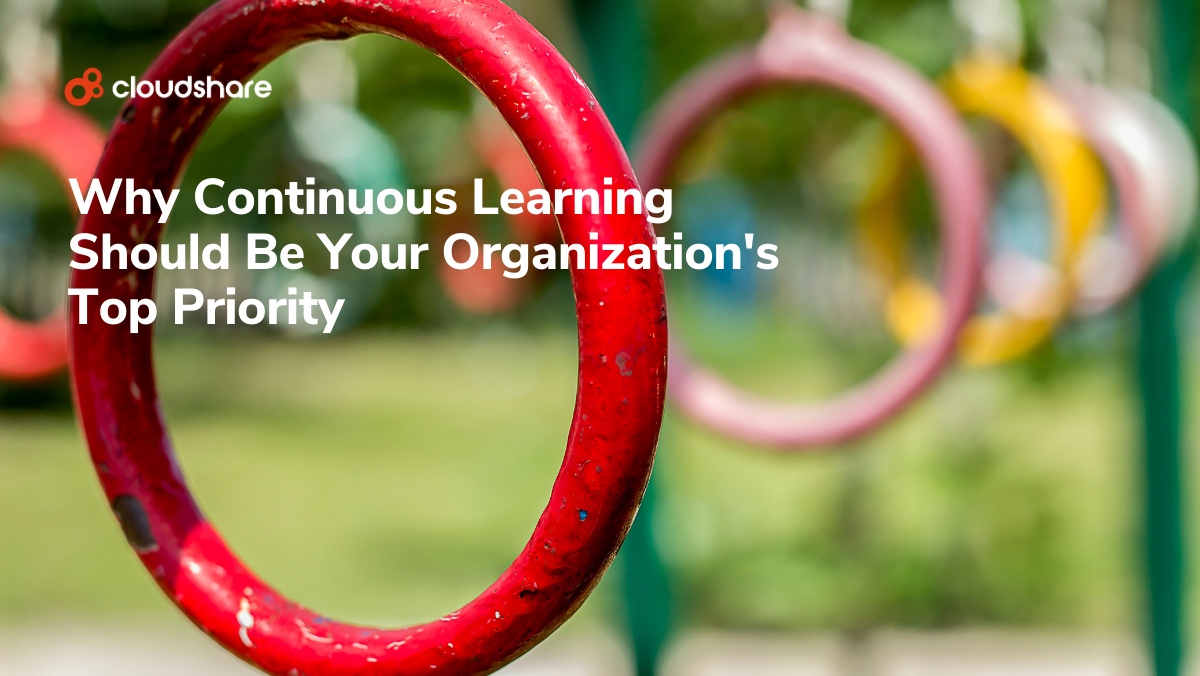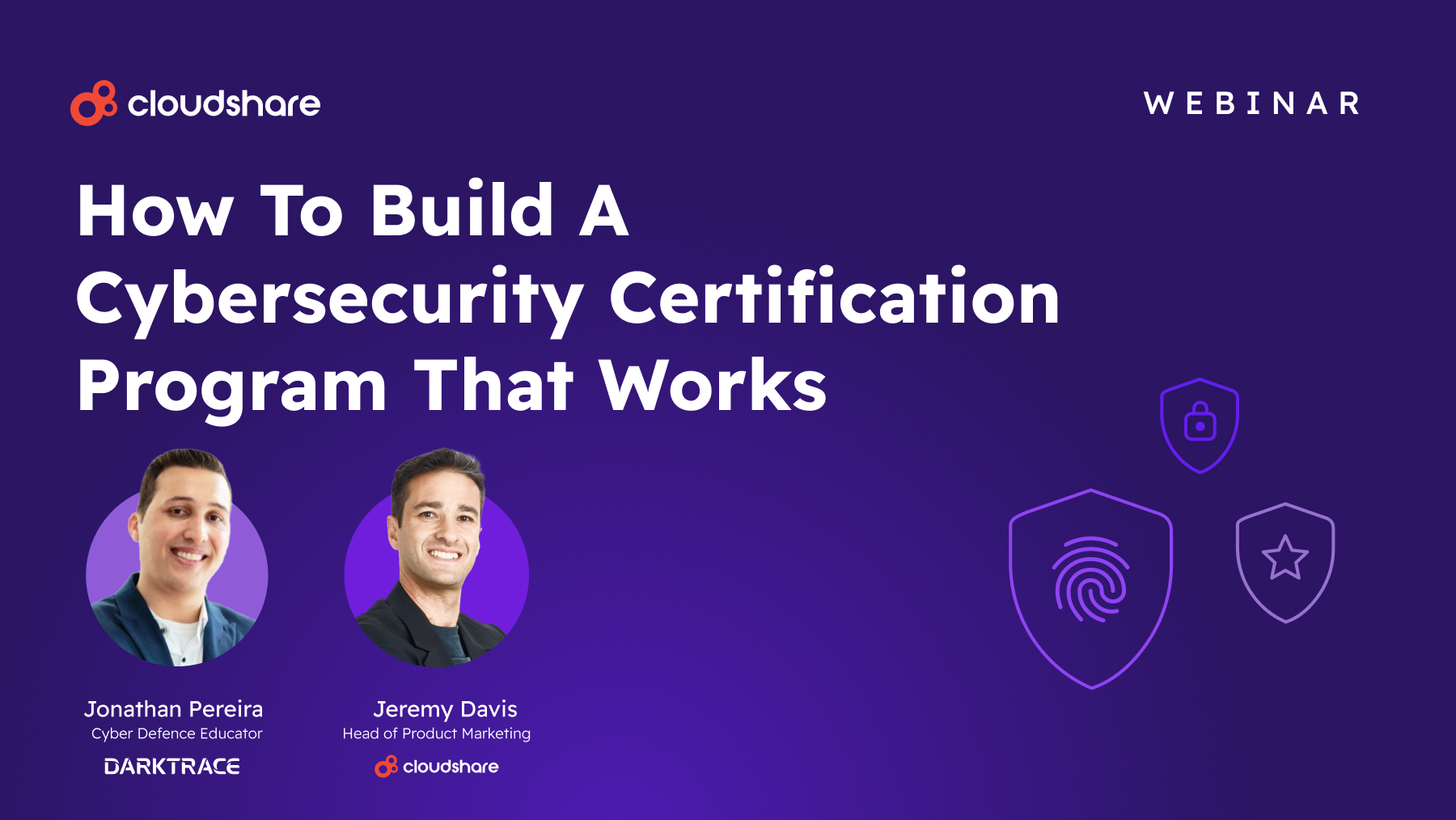
Our world is more connected than ever before — and that’s a double-edged sword.
On the one hand, businesses have the potential to connect with more prospective customers than ever. On the other hand, the same is true for their competitors.
As a result, the software industry has become hyper-competitive. A solid product is no longer enough for a provider that wants to stand out. Differentiation requires embracing a new culture and mindset, one focused on constant improvement.
Here’s how to embrace continuous learning and development across your organization (and why you should).
What is Continuous Learning?
Continuous learning is the ongoing process of helping employees develop new knowledge and skills. It goes beyond traditional onboarding, giving people access to the resources they need for long-term growth.
Continuous learning in the workplace can take many different forms. In addition to courses and workshops, it may include mentorship programs, conferences, podcasts, written guidance, and social interaction.
Key Benefits of Continuous Learning
According to LinkedIn’s 2025 Workplace Learning Report, companies prioritizing career development tend to be more profitable, find it easier to attract and retain talent, and are more likely to be early adopters of technology such as artificial intelligence.
The survey also found that 91% of learning and development professionals rank the importance of continuous learning as higher than ever. Given how ongoing professional development can benefit an organization, it’s not difficult to see why.
Engagement and Retention
No one wants to feel stuck in a job with no prospects. Most people in that situation will immediately jump ship for an employer that allows them to learn and grow. That works both ways, however:
- Companies that invest in learning and development typically retain employees nearly twice as long.
- 70% of employees say learning helps them feel a deeper sense of connection to their organization.
- 80% of employees feel learning adds purpose to their work.
- Employees who believe their employer supports upskilling are eight times more likely to pursue a career path with that company.
Productivity and Performance
Engagement doesn’t just go hand-in-hand with retention. It also greatly affects productivity, which directly impacts your organization’s performance.
Per analyst Deloitte, companies that provide continuous learning opportunities are 37% more productive than companies that don’t invest in professional development.
They’re also 92% more likely to innovate.
People who are more engaged tend to work harder and come up with more creative ideas, leading to better business outcomes.
Better Customer Experiences
Think about the last time you had a truly exceptional experience as a customer.
How did the representative interact with you? Were they knowledgeable about the product and the answers to your questions or issues? Were they passionate about helping you?
That level of knowledge and dedication is much easier to achieve in a workplace that supports continuous learning and development.
Business Growth
What does a business need to thrive in the current economic landscape?
- It needs to be agile and adaptable to market conditions that shift on a dime.
- It needs people willing to innovate and experiment, driving success through novel ideas and solutions.
- It needs to embrace continuous improvement, never resting on its laurels or stagnating.
An organization with a culture of continuous learning embodies all of these characteristics, positioning it for success both now and in the future.
How to Build a Continuous Learning Culture
You won’t be able to change your company culture overnight. Refocusing your business on learning and development requires a gradual approach.
Step One: Look At What You’re Currently Doing
First, assess your current approach to learning and development by asking the following questions:
- What skill or knowledge gaps currently exist in your organization?
- What are your business goals, and how might education help you fulfill them?
- What do your employees want to learn?
- How do your employees want to learn?
- What are the strengths and weaknesses of your learning and development program?
- Do you currently have a mechanism in place for collecting employee feedback? If so, how effective is it?
Step Two: Define Your Objectives
Think about what you want to achieve by implementing a learning culture and how you’ll measure progress toward those goals.
A business looking to become more agile will have different success metrics and key performance indicators than one looking to encourage innovation. Each business will also prioritize training on different topics and technologies.
Step Three: Get Leadership Buy-In
Cultural shifts always start at the top. Get leaders on board with a learning mindset by emphasizing how it will help them achieve their own individual goals.
From there, it’s just a matter of encouraging them to adopt a mindset that:
- Actively seeks new challenges;
- Emphasizes constant improvement;
- Regards failure as a learning opportunity.
Step Four: Put the Right Technology In Place
What tools do you currently use for learning and development? Does your learning management system support self-paced training? What about gamified learning and microlearning?
Bear in mind that to embrace continuous learning, you may need to explore some new training solutions.
Step Five: Rethink Workplace Communication
Encourage open, honest communication throughout your organization, especially between leadership and employees. People should feel comfortable voicing concerns or raising criticisms. Most importantly, they should feel like their work has tangible value to the organization and that their professional progress is in the company’s interests.
That means recognizing accomplishments in learning and development alongside other achievements in the workplace.
Step Six: Encourage Hands-On, Integrated Learning
If your workplace is anything like most, there’s a good chance many of your employees feel like there aren’t enough hours in the day. Heaping a time-consuming training program on top of their existing workloads probably won’t help matters.
Instead, explore alternatives like self-paced microlearning and social learning — activities they can do without unduly interrupting their workday or which they can engage in on their own time. After all, discretionary effort isn’t only something that employers love to see; it’s something that employees love to be seen doing.
Step Seven: Never Stop Improving
No training initiative is perfect. There’s always something you could be doing better. Part of a successful learning culture is acknowledging that fact and constantly looking for new ways to optimize how people learn.
Next Steps: Explore New Training Technology
A culture of continuous learning will likely require more than a traditional learning management system (LMS).
But what exactly does that look like?
Read Thinking Beyond the Traditional LMS to find out.




